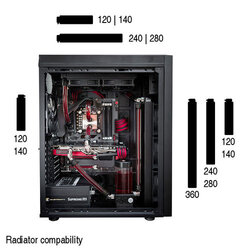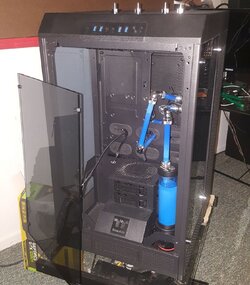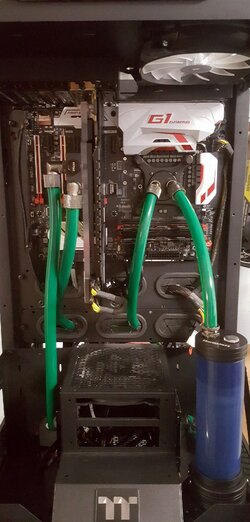- Joined
- May 22, 2016
Now that my 1070 is officially gone, I'm going to pull the trigger on a 1080 ti this week.
Based on the fact that I want to water cool, here's the choices I've considered and I'm unsure where to go.
1. Buy the cheapest card I can and add a full water block. Is there any upside to this? Maybe lower cost on the used market?
2. Buy a card with a waterblock already on it. Cost seems less, with a $700 card being the cheapest on NE and a $140 block from EKWB vs a $820 card with a waterblock already on it like the Zotac ArcticStorm. Any downside to this vs installing a block on a card?
3. Buy a AIO gpu like the waterforce that cools the whole card, requires no extra plumbing, and has a 4 year warranty. Upside - Least cost ($820 on NE) and least work involved setting it up. Downside - if the pump fails, can I splice in new lines and route my current loop through it?
I'm really liking the waterforce AIO card for its simplicity and nice warranty. Is there any major upside to running the card in my current CPU loop vs the AIO setup? I can't find a reason for option 1 over option 2, so if there's something I'm missing please let me know.
Based on the fact that I want to water cool, here's the choices I've considered and I'm unsure where to go.
1. Buy the cheapest card I can and add a full water block. Is there any upside to this? Maybe lower cost on the used market?
2. Buy a card with a waterblock already on it. Cost seems less, with a $700 card being the cheapest on NE and a $140 block from EKWB vs a $820 card with a waterblock already on it like the Zotac ArcticStorm. Any downside to this vs installing a block on a card?
3. Buy a AIO gpu like the waterforce that cools the whole card, requires no extra plumbing, and has a 4 year warranty. Upside - Least cost ($820 on NE) and least work involved setting it up. Downside - if the pump fails, can I splice in new lines and route my current loop through it?
I'm really liking the waterforce AIO card for its simplicity and nice warranty. Is there any major upside to running the card in my current CPU loop vs the AIO setup? I can't find a reason for option 1 over option 2, so if there's something I'm missing please let me know.


